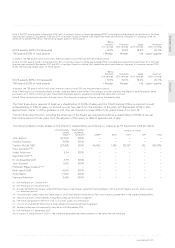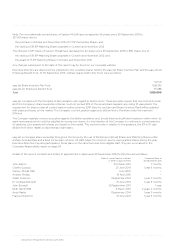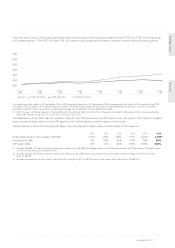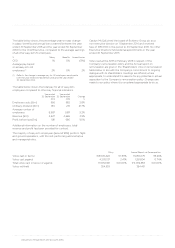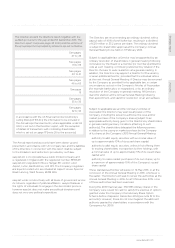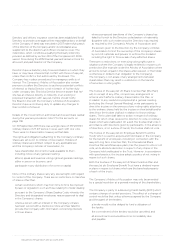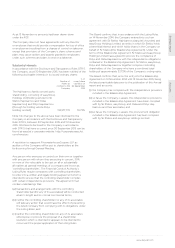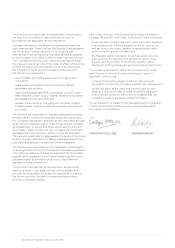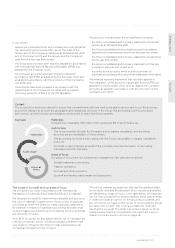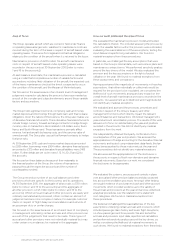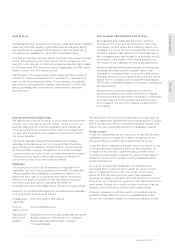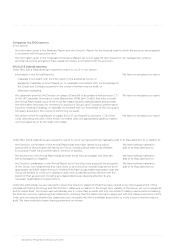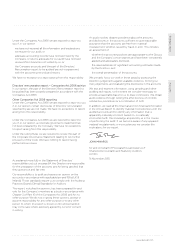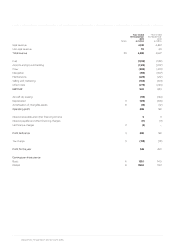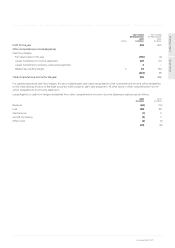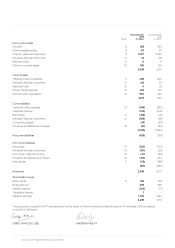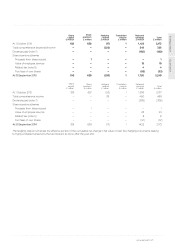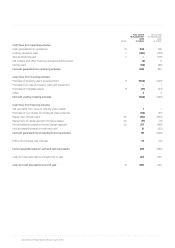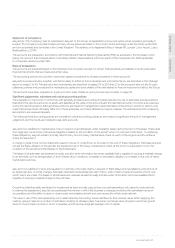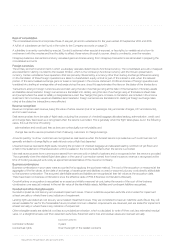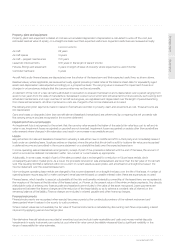EasyJet 2015 Annual Report Download - page 91
Download and view the complete annual report
Please find page 91 of the 2015 EasyJet annual report below. You can navigate through the pages in the report by either clicking on the pages listed below, or by using the keyword search tool below to find specific information within the annual report.
Strategic report Governance Accounts
87
www.easyJet.com
Area of focus How our audit addressed the area of focus
Goodwill and landing rights impairment assessment
Goodwill arises from acquisitions in previous years and has an indefinite
expected useful life. Landing rights (which are an intangible asset)
are considered by management to have an indefinite useful life as
they will remain available for use for the foreseeable future.
Goodwill and landing rights are tested for impairment at least annually
at the cash-generating unit (‘CGU’) level. The Group has one CGU,
being its route network, to which all goodwill and landing rights relate.
At 30 September 2015, they amounted, in aggregate, to £459 million
(refer to notes 1 and 8 to the accounts).
We focused on this assessment as the impairment test involves a
number of subjective judgements and estimates by management,
many of which are forward-looking. These estimates include key
assumptions surrounding the strategic plan through to 2020, fuel
prices, exchange rates, long-term economic growth rates and
discount rates.
We evaluated and challenged the future cash flow
forecasts of the CGU, and the process by which they
were drawn up, and tested the underlying value in use
calculations. In doing this, we compared the forecast to
the latest strategic plan presented to the Board, along
with comparing prior year budget to actual data, as this
informed as to the quality of the forecasting process.
The results of our evaluation proved to be satisfactory.
We also challenged the key assumptions for fuel prices,
exchange rates and long-term growth rates in the
forecasts by comparing them to economic and industry
forecasts; and the discount rate by assessing the cost of
capital for the Company and comparable organisations.
We found no material exceptions from these comparisons
and assessments.
We performed sensitivity analysis around the key
assumptions above to ascertain the extent of change
in those assumptions that either individually or collectively
would be required for the goodwill and landing rights
to be impaired. We found no material exceptions from
this analysis.
How we tailored the audit scope
We tailored the scope of our audit to ensure that we performed
enough work to be able to give an opinion on the accounts as
a whole, taking into account the geographic and operational
structure of the Group, the accounting systems, processes and
controls, and the industry and regulatory environment in which
the Group operates.
The Group operates through the Company and its trading
subsidiary undertakings as set out on page 121 and the Group
accounts are a consolidation of these entities. The accounting
for these entities is largely centralised in the UK and our audit
scope comprises an audit of their complete financial information.
These procedures gave us the evidence that we needed for
our opinion on the Group’s accounts as a whole.
Materiality
The scope of our audit was influenced by our application of
materiality. We set certain quantitative thresholds for materiality.
These, together with qualitative considerations, helped us to
determine the scope of our audit and the nature, timing and
extent of our audit procedures on the individual account line
items and disclosures and in evaluating the effect of
misstatements, both individually and on the accounts as a whole.
Based on our professional judgement, we determined materiality
for the accounts as a whole as follows:
Overall group
materiality
£34 million (2014: £29 million).
How we
determined it
5% of profit before tax.
Rationale for
benchmark
applied
We applied this benchmark, a generally accepted
auditing practice, in the absence of indicators
that an alternative benchmark would be
more appropriate.
We agreed with the Audit Committee that we would report to
them misstatements identified during our audit above £2 million
(2014: £2 million) as well as misstatements below that amount
that, in our view, warranted reporting for qualitative reasons.
Going concern
Under the Listing Rules we are required to review the Directors’
statement, set out on page 22, in relation to going concern.
We have nothing to report having performed our review.
Under ISAs (UK & Ireland) we are also required to report to you
if we have anything material to add or to draw attention to
in relation to the Directors’ statement about whether they
considered it appropriate to adopt the going concern basis in
preparing the accounts. We have nothing material to add or
to draw attention to.
As noted in the Directors’ statement, the Directors have
concluded that it is appropriate to adopt the going concern
basis in preparing the accounts. The going concern basis
presumes that the Group and Company have adequate
resources to remain in operation, and that the Directors intend
them to do so, for at least one year from the date the accounts
were signed. As part of our audit we have concluded that the
Directors’ use of the going concern basis is appropriate.
However, because not all future events or conditions can be
predicted, these statements are not a guarantee as to the
Group’s and Company’s ability to continue as a going concern.


